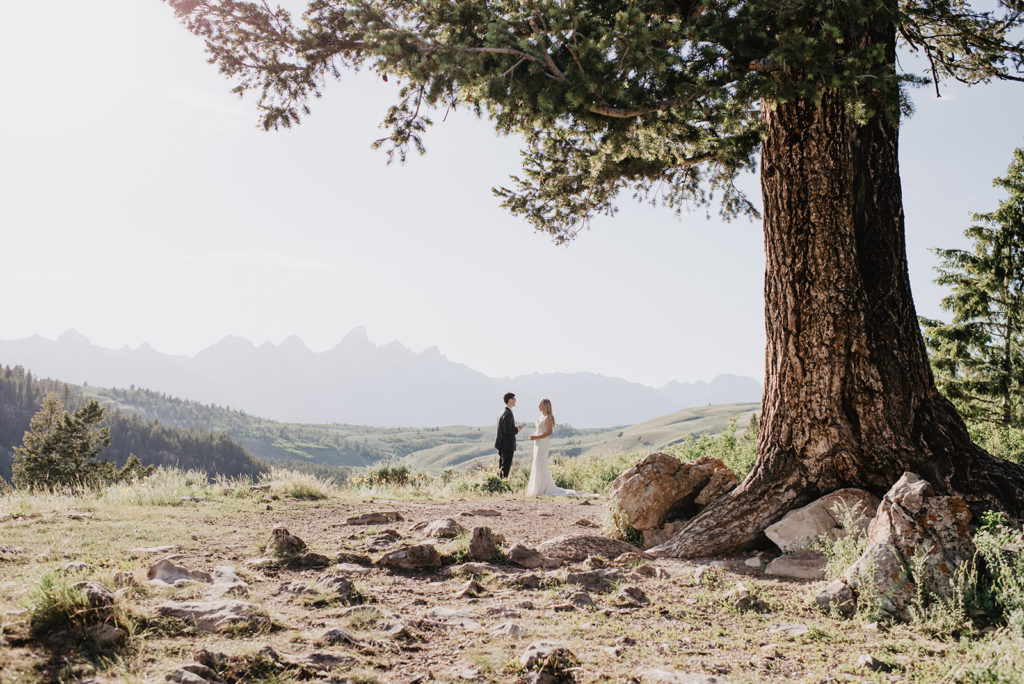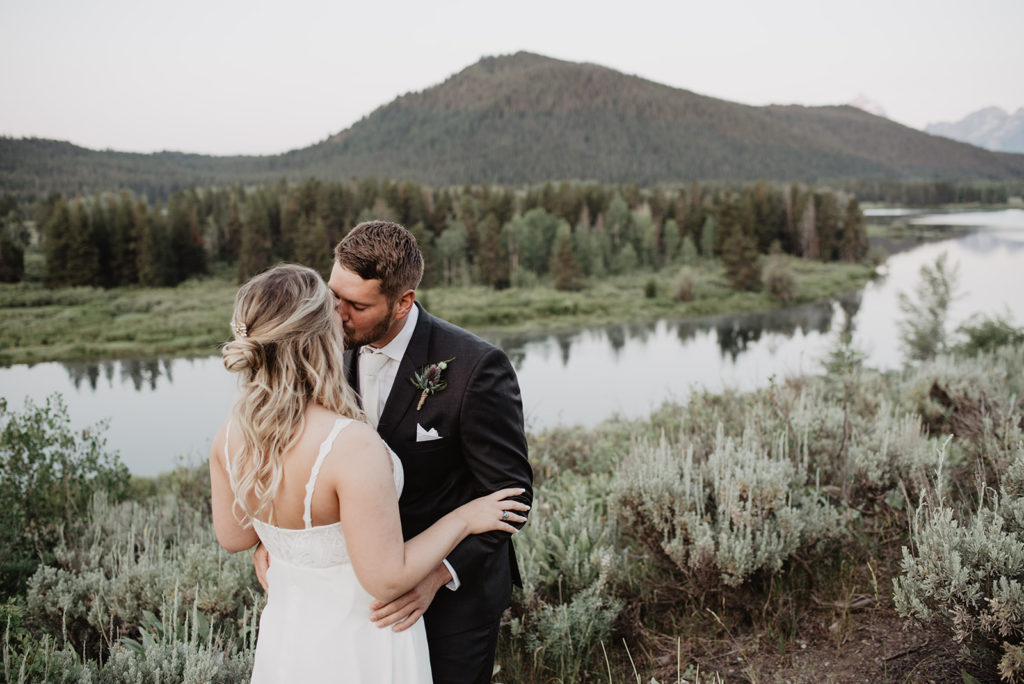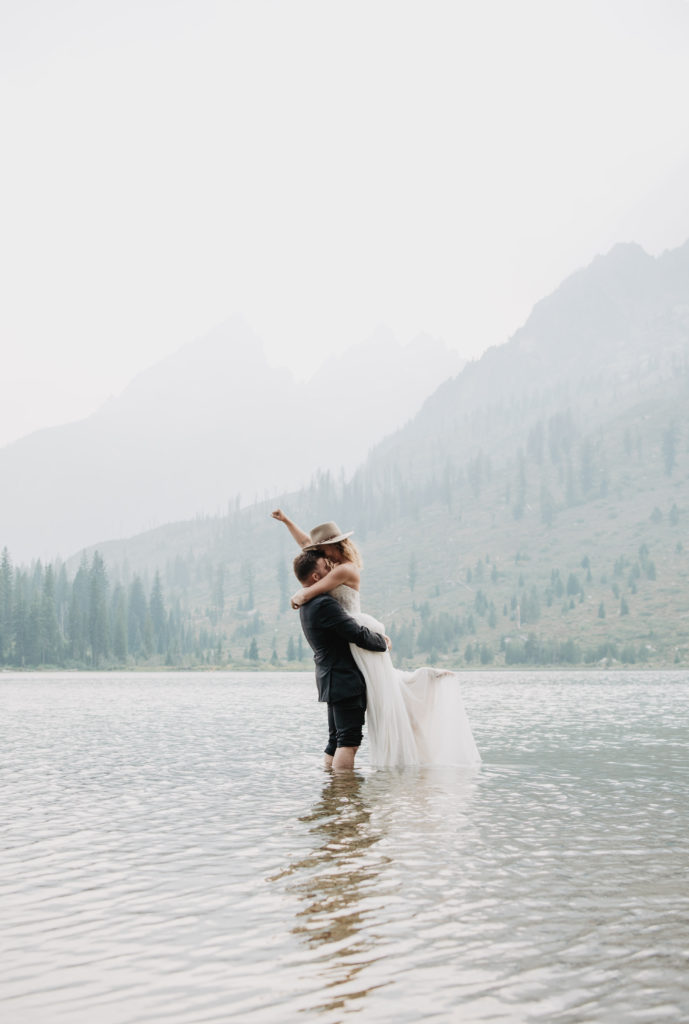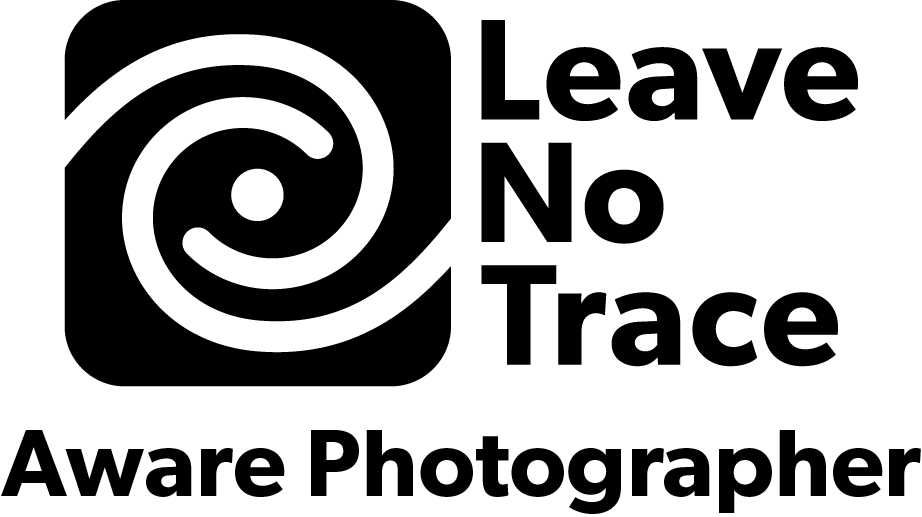Why leave No Trace Is So Important For You?
Following Leave No Trace principles during your elopement is extremely important for many reasons. But, the WHY that means most to you is that the location of your wedding will hold great significance for you and your spouse. For this reason, it’s in your best interest to keep the spot open and the landscape looking beautiful.It is so unfortunate when locations get trampled and destroyed due to becoming popular and overrun. I have seen several of my favorite locations that were full of lush green grass turn to dirt because of so many people walking on the fragile vegetation. I’ve seen places that once had wildlife become so crowded that the animals get pushed out. There have also been locations closed to visitation temporarily, or even permanently. This is in effort to restore them, which is a process that takes years, while some never recover.
I want my couples to be able to revisit the land where they were married. And to share these sacred places with their children and loved ones. I want them to be able to do anniversary and family photo sessions in these locations that hold so much meaning to them. It takes effort from every visitor to preserve and protect these stunning landscapes!

What is Leave No Trace?
The biggest misconception is that Leave No Trace is a set of black and white rules that restrict you from really experiencing and enjoying yourself in nature. In reality, Leave No Trace is a set of guidelines not rules. This means you have to educate yourself and use your best judgement when in nature. And you still get to enjoy yourself! When in nature you are able to look, touch, taste and really feel it all! Leave No Trace is a set of principles that are meant to educate visitors on how to best experience nature and preserve it for years to come.

Principle #1: Plan Ahead & Prepare
If you aren’t familiar with the area you are visiting for your elopement, then make sure you either do your own research or have a photographer/planner that knows the area and is educated in Leave No Trace. You will want to know what the weather is like. As well as, what walking/hiking trails will be like so you can come prepared with the right clothing, shoes and gear needed to have an enjoyable and safe experience.
In addition, consider any permits that may be required since this is a popular necessity in National Parks, State Parks and even on some BLM locations. You don’t want your event or activity coming to a halt due to unforeseen permit regulations. Another important thing to look into is what is provided and what you will need to bring. Some locations have bathrooms & garbage and others don’t. Planning ahead and preparing will allow you to have the best experience!
Principle #2: Travel & Camp On Durable Surfaces
Certain plants, soils, vegetation, water sources, etc. are extremely fragile. Not only can we ruin the beauty of an area. But, there are needed resources for wildlife and natives to sustain life. Those need to be preserved. The following tips can help you make the best decision when wanting to travel off trail and experience the area.
– Water is the greatest life-giving resource. In many mountain locations there is enough water for our own personal use and recreation. However, in desert areas water is very limited. Here it’s important not to disturb small streams and puddles.
– Another difference between mountain landscapes and desert lands is the soil. There is a living soil called crypto soil, a biological soil crust that lives in many deserts. This living organism is extremely fragile and once disturbed may take decades to recover and may never be the same. It’s important to be able to recognize this soil and know what surfaces are “durable” enough to walk on. Stick to trails and rock surfaces when walking and setting up camp.
– Wildflowers are another fragile vegetation. Many of us want epic photos running, standing or laying in a field of wildflowers. These incredible images can still be created by staying on trail, they just might require more creativity. Also, refrain from picking the wildflowers as they hold seeds that can’t be replanted until the flower has naturally dried and released the seeds.

Principle #3: Dispose Of Waste Properly
Generally, anything that you bring in you must bring out with you. Make sure you’re picking up even the tiniest piece of waste, this includes small pieces of food that get dropped. Many foods take much longer to decompose than we think. Food can attract wildlife and disrupt their natural migration and diet. I have witnessed beautiful bears become accustomed to human food and have behavioral changes and/or start migrating into towns where they become a problem and euthanization is necessary. For this reason it’s never okay to feed wildlife and picking up even the smallest waste is important!
Principle #4: Leave What You Find
Many want to take home a souvenir like rocks, wildflowers, etc. If everyone did this the landscape and habitat could change dramatically. Taking photos of these things is the best practice.
Principle #5: Minimize Campfire Impacts
Always use the best fire safety and never leave a fire unattended. Use fire rings to contain your flame and find existing fire rings to use whenever possible. Many places have fire rings marked on maps so that you can use existing ones instead of creating new ones.

Principle #6: Respect Wildlife
Keep a safe and respectful distance, never feed wildlife and limit noise that can disturb them. Keep yourself safe from wildlife attacks by educating yourself on the wildlife in the area and what to do when you encounter them. Remember you are a visitor in their home, not the other way around.
Principle #7: Be Considerate Of Other Visitors
Nature is meant to be a shared space, be respectful of others. Many couples that hold a ceremony permit have the belief that they are able to have that location completely to themselves. In actuallity these places that are on public lands are for everyone and special use permits only authorize you to conduct a special event on that land. We still need to share the space with tourists and any other visitors. I like to choose locations that are more secluded for ceremonies so my couples get the privacy they deserve for their vows. For desired photos at popular locations we may have to wait our turn for a certain spot and will keep our time there short to allow others the same opportunity.
Noise is another thing to be aware of. You may want to play some music to share a first dance or to celebrate right after your ceremony. This is a wonderful way to add to your day and we can still be considerate of others by choosing a location away from others and keeping the volume at a reasonable level.

How To Ensure You’re Following Leave No Trace During Your Elopement?
The greatest way to be sure that you are doing things right is to educate yourself and properly prepare. Hiring a photographer or planner who knows these principles and is familiar with the area will be your greatest asset.
Another way you can help Leave No Trace is be intential with what what you post online. Geo-tagging locations and sharing specific location details can increase the visitation and bring a negative impact to the area. It’s amazing how quickly a photo can go viral and devistatingly impact an area! Similarily, posting photos that APPEAR to show you walking through a field of wildflowers (even when you stayed on the trail) can influence others to venture off trail. You can still post these beautiful photos, but maybe use the opportunity to write a caption about Leave No Trace, educate and encourage others to stay on trails too.
We are extremely blessed to have such incredibly beautiful places to venture into nature and hold sacred events such as a marriage and vow ceremonies. Together we can ensure that this opportunity remains available and work to protect the lands and wildlife we love.
Ready for your Leave No Trace elopement with a certified Leave No Trace Aware Photographer? Reach out and let’s start planning!
